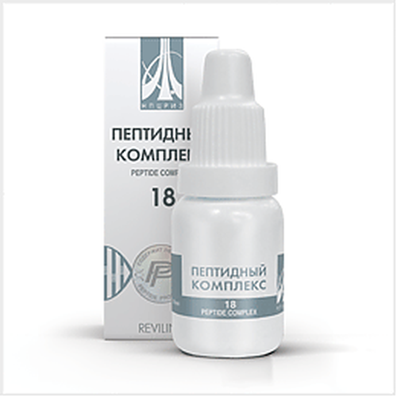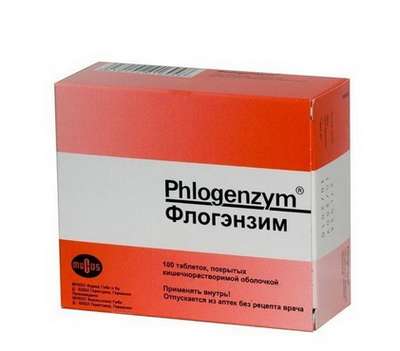Instruction for use: Rocuronium bromide (Rocuronii bromidum)
I want this, give me price
chemical name
1 - [(2beta, 3alpha, 5alpha, 16beta, 17beta) -17- (Acetyloxy) -3-hydroxy-2- (4-morpholinyl) androstane-16-yl] -1- (2-propenyl) pyrrolidinium bromide
Pharmacological group
n Cholinolytics (muscle relaxants)
The nosological classification (ICD-10)
Z100 * CLASS XXII Surgical practice
Abdominal surgery, adenomectomy, Amputation, Coronary angioplasty, Angioplasty of the carotid arteries, Antiseptic skin treatment for wounds, Antiseptic Hand, Appendectomy, atherectomy, Balloon coronary angioplasty, Vaginal hysterectomy, The coronary bypass, Interventions in the vagina and cervix, Interventions on the bladder, Intervention in the mouth, Restoration and reconstructive surgery, Hand hygiene of medical personnel, Gynecologic surgery, Gynecological intervention, Gynecological surgery, Hypovolemic shock during operations, Disinfection of purulent wounds, Disinfection of wounds edges, Diagnostic intervention, Diagnostic procedures, Cervical Diathermocoagulation, Long-surgery, Replacing the fistula catheters, Infection in orthopedic surgery, Artificial heart valve, cystectomy, Short-term outpatient surgery, Short-term operation, Short surgical procedures, Krikotireotomiya, Blood loss during surgery, Bleeding during surgery and in the postoperative period, Kuldotsentez, laser photocoagulation, laser coagulation, retinal laser coagulation, Laparoscopy, Laparoscopy in Gynecology, CSF fistula, Small gynecological operations, Small surgical procedures, Mastectomy and subsequent plastic, mediastinotomy, Microsurgical operations on the ear, Mukogingivalnye operation, suturing, Minor surgery, neurosurgical operation, Immobilization of the eyeball in ophthalmic surgery, testectomy, pancreatectomy, Perikardektomiya, The period of rehabilitation after surgery, The period of, convalescence after surgery, Percutaneous transluminal coronary angioplasty, Pleural thoracentesis, Pneumonia postoperative and posttraumatic, Preparation for surgical procedures, Preparation for surgery, Preparation of the surgeon's hands before surgery, Preparation of the colon for surgical procedures, Postoperative aspiration pneumonia in neurosurgical and thoracic surgery, Postoperative nausea, Postoperative bleeding, postoperative granuloma, postoperative shock, The early postoperative period, myocardial revascularization, Radiectomy, gastric Resection, bowel resection, uterine Resection, liver Resection, enterectomy, Resection of part of the stomach, Reocclusion of the operated vessel, Bonding tissues during surgical procedures, Removal of sutures, Condition after eye surgery, Condition after surgery, Condition after surgery in the nasal cavity, Condition after gastrectomy, Status after resection of the small intestine, Condition after tonsillectomy, Condition after removal of the duodenum, Condition after phlebectomy, Vascular surgery, Splenectomy, Sterilization of surgical instruments, Sterilization of surgical instruments, sternotomy, Dental surgery, Dental intervention in periodontal tissues, strumectomy, Tonsillectomy, Thoracic surgery, total gastrectomy, Transdermal intravascular coronary angioplasty, Transurethral resection, Turbinektomiya, Removal of a tooth, cataract surgery, Removal of cysts, tonsillectomy, Removal of fibroids, Removing the mobile primary teeth, Removing polyps, Removing broken tooth, Removal of the uterus body, Removal of sutures, Urethrotomy, Fistula likvoroprovodyaschih ways, Frontoetmoidogaymorotomiya, Surgical infection, Surgical treatment of chronic limb ulcersm, Surgery, The surgery in the anal area, The surgery on the colon, Surgical practice, The surgical procedure, Surgical interventions, Surgery on the gastrointestinal tract, Surgical procedures on the urinary tract, Surgical procedures on the urinary system, Surgical intervention of the genitourinary system, Surgical procedures on the heart, Surgical manipulation, surgery, Surgery on the veins, Surgical intervention, Vascular surgery, Surgical treatment of thrombosis, cholecystectomy, Partial gastric resection, transabdominal hysterectomy, Percutaneous transluminal coronary angioplasty, Percutaneous transluminal angioplasty, Coronary artery bypass, tooth Extirpation, Extirpation of milk teeth, pulpectomy, pulsative cardiopulmonary bypass, tooth Extraction, teeth Extraction, cataract extraction, Electrocoagulation, endourological intervention, episiotomy, Etmoidotomiya, Complications after tooth extraction
Z40 Prophylactic surgical intervention
Inhalation anesthesia, Intratracheal Intubation, Intubation of the trachea, Surface anesthesia in ophthalmology
Code CAS 119302-91-9
Characteristics
Nondepolarizing muscle relaxant with a short (closer to average) duration of action. Synthetic mono-quaternary steroid analogue of vecuronium. The partition coefficient of n-octanol / water is 0.5 at 20 ° C. Molecular weight 609.70.
Pharmacology
Pharmacological action - miorelaksiruyuschee, nedepolyarizuyuschee, n-holinoliticheskoe.
Competitive antagonist of acetylcholine with respect to n-holinoretseptorov skeletal musculature. Oppresses the neuromuscular transmission of stimulation and causes relaxation of skeletal muscles. Has a weak vagolytic effect, increases heart rate within 30%, practically does not affect the release of histamine (in clinical trials, 0.8% of patients, 9/1137) were observed.
ED95 (the dose needed to inhibit 95% of the contractile capacity of the thumb muscle to stimulate the ulnar nerve) with IV general anesthesia - about 0.3 mg / kg. After a single IV injection of 0.6 mg / kg intubation is possible in 1.6 minutes - in adults and 1 min - in children older than 3 months; The maximum miorelaxing effect is achieved after 1.8 minutes - in adults, 0.8-1 minutes - in children 3 months to 12 years and 3.7 minutes - in patients older than 65 years; The duration of the effect is 22 minutes for adults, 26 minutes for children 1-12 years, 41 minutes for children 3 months and 41 minutes for older patients, and 46 minutes for elderly patients. The time of reaching and the duration of the effect are dose-dependent.
The distribution is of a two-phase nature. T1 / 2 in the fast phase - 1-2 min, in the slow phase - 14-18 min. The volume of distribution is 0.21-0.3 l / kg. It binds to plasma proteins by 30%. T1 / 2 - 97 min, Cl - 3.7 ml / kg / min (in children - above). Metabolized in the liver with the formation of 17-deacetyl-rocuronium, which has a weak myorelaxing activity. Eliminated mainly with bile (70%), to a lesser extent kidney (30%).
The duration of action is increased by 1.5 times in patients with hepatic insufficiency, with renal failure pharmacokinetics does not change.
In the studies carried out on animals, no carcinogenic effect, mutagenic effects, effects on fertility were detected.
Indications
Short-term miorelaxation (for endotracheal intubation and ventilation).
Contraindications
Hypersensitivity.
Restrictions on the use
Violation of acid-base or electrolyte balance, burns, cachexia, cardiovascular diseases, impaired liver function, neuromuscular diseases (including myasthenia gravis), pulmonary hypertension, renal failure, age up to 3 months (there is insufficient clinical experience) .
pregnancy and lactation
When pregnancy is possible, if the expected effect of the application exceeds the potential risk for the fetus (adequate and strictly controlled studies have not been conducted). Penetrates through the placenta. In studies on rats there was no teratogenic effect of 0.3 mg / kg dose.
The action category for fetus by FDA is C.
It is not known whether rocuronium bromide penetrates into breast milk.
Side effects
From the cardiovascular system: arrhythmia, incl. Tachycardia, a decrease or increase in blood pressure.
On the part of the intestine: nausea, vomiting, hiccough.
Allergic reactions: angioedema, skin rash, bronchospasm, dyspnea.
Other: local reactions - swelling and pain at the injection site during extravasation.
Interaction
Pharmaceutically incompatible with amphotericin, amoxicillin, azathioprine, cefazolin, dexamethasone, diazepam, erythromycin, famotidine, furosemide, hydrocortisone, insulin, methylprednisolone, prednisolone, trimethoprim, vancomycin. The effect is enhanced by aminoglycosides, polymyxins, tetracyclines, vancomycin, bacitracin, metronidazole (in high doses), diuretics, alpha-adrenoblockers, beta adrenoblockers, MAO inhibitors, protamine sulfate, magnesium salts, gluco- and mineralocorticoids, quinidine, and other nondepolarizing muscle relaxants. Atropine, hyoscyamine - enhance the vagolytic effect. Weaken the effect: aminophylline, theophylline, phenylephrine, phenytoin, thiamine.
Means for inhalation anesthesia (enflurane, isoflurane) enhance and prolong the effect (it is recommended to reduce the rate of their infusion by 40%).
Overdose
Symptoms: excessive decrease in blood pressure, collapse, weakness of skeletal muscles, apnea, shock.
Treatment: IVL, after the appearance of signs of spontaneous recovery - neostigmine bromide, pyridostigmine bromide, symptomatic therapy.
Routes of administration
In / in.
Precautions
Should be administered only by an anesthesiologist or a specialist experienced in the use of muscle relaxants. Applied only with intubation anesthesia and in the presence of conditions necessary for carrying out ventilation. Does not affect the consciousness or threshold of pain sensitivity, adequate analgesia and sedation are necessary.
Causes intense burning pain when injected into the peripheral vein, therefore, they are administered only after switching off the consciousness.
When monitoring the clinical effect using peripheral neurostimulation, it is necessary to take into account that the relaxation of the muscles of the larynx occurs more quickly, but less pronouncedly than the relaxation of m. Adductor pollicis, and the diaphragm is more resistant to the action of rocuronium bromide. A more reliable criterion for the possibility of intubation is the relaxation of the vocal cords and diaphragm in comparison with the expression of the neuromuscular block recorded with the help of a peripheral neurostimulator with m. Adductor pollicis.
There may be a delay in the onset of the effect in patients with cardiovascular diseases or the elderly due to a slowing of the circulation; Large doses to accelerate the development of the effect are not applied because of the possibility of prolonging the action.
The increase in the effect of rocuronium bromide is promoted by hypokalemia (for example after severe vomiting, diarrhea, diuretic therapy), hypermagnesia, hypocalcemia (eg after massive blood transfusions), hypoproteinemia, dehydration, acidosis, hypercapnia, cachexia.
Prior to the appointment should be, if possible, corrected severe electrolyte disturbances, changes in blood pH, dehydration.
Doses in excess of 0.9 mg / kg body weight may lead to an increase in heart rate, which can counteract bradycardia caused by other anesthetics or arising from vagus nerve stimulation. In experimental studies it was shown that rocuronium bromide is a factor provoking the development of malignant hyperthermia. It should be borne in mind that during the general anesthesia, even in the absence of known provoking agents, malignant hyperthermia may develop, so specialists should carefully monitor the early manifestations confirming the diagnosis of malignant hyperthermia. In experimental studies it was shown that rocuronium bromide is a factor provoking the development of malignant hyperthermia.
Since the drug causes paralysis of the respiratory muscles, it is necessary to carry out mechanical ventilation until adequate recovery of self-breathing.

 Cart
Cart





